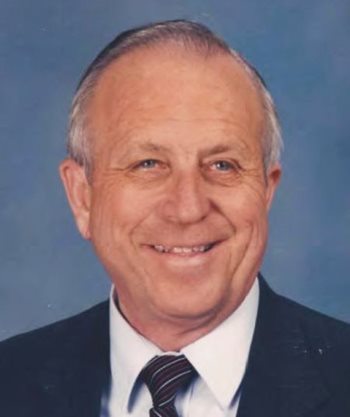11 February 2022
UC San Diego Innovation Helped Launch OTI Education Centers 30 Years Ago
By Marg Stark

Thanks to UC San Diego Extension and an innovation that made occupational health and safety training readily available, the nation’s workplaces are significantly safer. It all started three decades ago when a visionary UC San Diego leader suggested that OSHA “franchise” their OSHA Training Institute (OTI), creating a first-of-its-kind U.S. educational collaboration.
As UC San Diego hails this 30th anniversary, an estimated 80,000 students have taken advantage of occupational health and safety training at OSHA Training Institute Education Centers (OTIECs) across the country. Today, 37 OTIECs— administered in 10 regions by non-profit universities, colleges, and organizations—provide critical and lifesaving training for American workers. All of this stems from an idea proposed by Dr. John Peak, the director of UC San Diego Extension’s Engineering and Science Division at the time.
“UC San Diego is a leader today in teaching workplace health and safety because of John Peak,” says Dr. Mary Walshok, the former dean of UC San Diego Extension. Having studied at some of the nation’s pre-eminent universities, including Massachusetts Institute of Technology, Princeton University, and Harvard Business School, Peak wanted to make OSHA training available to the masses. “With the OTIEC concept,” Walshok says, “John imagined a future in which far bigger swaths of the American workforce could be trained to prevent peril.”
 In 1991, Peak attended a seminar at which OSHA executives relayed that the agency was unable to keep up with the public and private industry’s demand for training. He was quick to propose a solution: the franchise concept. A couple of months later, he submitted an unsolicited proposal to OSHA on behalf of the university, which was already teaching occupational health and safety courses as part of adult continuing education.
In 1991, Peak attended a seminar at which OSHA executives relayed that the agency was unable to keep up with the public and private industry’s demand for training. He was quick to propose a solution: the franchise concept. A couple of months later, he submitted an unsolicited proposal to OSHA on behalf of the university, which was already teaching occupational health and safety courses as part of adult continuing education.
In a 1994 letter from the Department of Labor recognizing UC San Diego’s initiative, Office of Training and Education director Harvey Harris wrote, “The submission to us of an unsolicited proposal...provided the impetus to develop and implement the OTIEC two-year pilot program.” OSHA adopted into the pilot program, the letter continues, many of the procedures Peak outlined in the proposal.
Peak’s dream was quickly realized as UC San Diego was selected in 1992 as one of the first four OTIECs to be established. Up until that time, if you worked in construction or the shipyards in San Diego and wanted to receive OSHA training, you had to travel to the OSHA Training Institute in Des Plaines, Illinois. “The cost was beyond what most workers or employers could bear, and classes were often overbooked,” says Bob Harrell, the first instructor hired for the UC San Diego OTIEC. “If you did get to Des Plaines, that midwestern weather was a shock to the system.”
Harrell still remembers the inaugural October 1992 OTIEC class. “We really had to prove ourselves that we could teach to the federal standards,” he recalls. He assembled a three-ring binder for the students since OSHA had not yet released their training manual. “I taught the full 30-hour course, the only instructor. I used 35-millimeter slides to show actual jobsite conditions and asked students to spot the violations. And, of course, my safety technique demos were on VHS tapes.” Still, when all was said and done, the agency representative sent to evaluate the course had only one suggestion: use the OSHA student manual.
At the time, an ambitious public management crusade was underway with designs on “reinventing government.” In their book by the same name, David Osborne and Ted Gaebler posited that the government’s job was not to provide services but to see that they were provided.
The OTIEC pilot captured the spirit of this reinvention, training 1,300 workers by the end of the first year, of which UC San Diego had taught more than 40 percent. From the start, the OTIEC program was self-supporting and required no federal funding. In Peak’s initial proposal, he assured the government that the university could find its own revenue stream to pursue the training via a Non-Financial Cooperative Agreement.
Today in Region IX, UC San Diego offers training to private and public sector employees in California, Arizona, Nevada, Hawaii, Guam, American Samoa, and the Commonwealth of the Northern Mariana Islands. “From the start, people loved coming to San Diego to get their training, to enjoy the weather and to get their certificates from such a prestigious university,” says UC San Diego instructor Suzy Shamsky. In those early days, she relays, classes were more compliance-oriented, with workers intent on avoiding workplace violations and their accompanying costs.

Shamsky notes that UC San Diego was always able to attract instructors who were working professionals in the construction, maritime, and general industries. “The students could expect to hear from experts who had worked in these fields and witnessed these hazards firsthand.”
An unexpected benefit of OTIECs, Shamsky says, was being exposed to workers from different fields. “We all have a limited sphere on our jobs, but in the classroom, folks from Disneyland and the Hollywood entertainment industry mingled with the personnel from a sewage treatment plant.”
Today, in OSHA’s Outreach Training Program, employees who complete the required prerequisites and relevant trainer course are then authorized to teach occupational health and safety to others. Indeed, the propagation and growth of occupational health and safety training have transformed the way that it is viewed. “Now,” Shamsky adds, “attendees really care about protecting their employees, not only compliance concerns. Many are choosing health and safety as a career.”
UC San Diego’s OTIEC continues to be a national leader not only because of the quality of instruction but because of its trademark customer service. For example, UC San Diego issues the Outreach Training completion cards (i.e., OSHA 10- and 30-hour cards)—serving as the completion documentation and entry ticket for many worksites—within 48 hours. The standard processing time elsewhere is 30 days.
Shamsky notes that OTIEC instructors are always seeking to improve, this year taking classes online during the pandemic. “Thirty years ago, we relied on lectures and slides. Today, we offer a great deal of interaction, breakout groups, and hands-on demonstrations, videos, and techniques that appeal to different learning styles.”
OSHA will commemorate the 30th anniversary with a number of events. Although Peak passed away in 2017, he participated in and was honored for his role at the 20th-anniversary celebration in 2012.
As she heads into retirement, Walshok counts the advent of OTIECs as one of the most meaningful achievements during her tenure. “Clearly, one of the most important moves I made as a young dean was to hire John Peak.”
Have you taken a safety training course with us? Tell us about your experience in the comments!